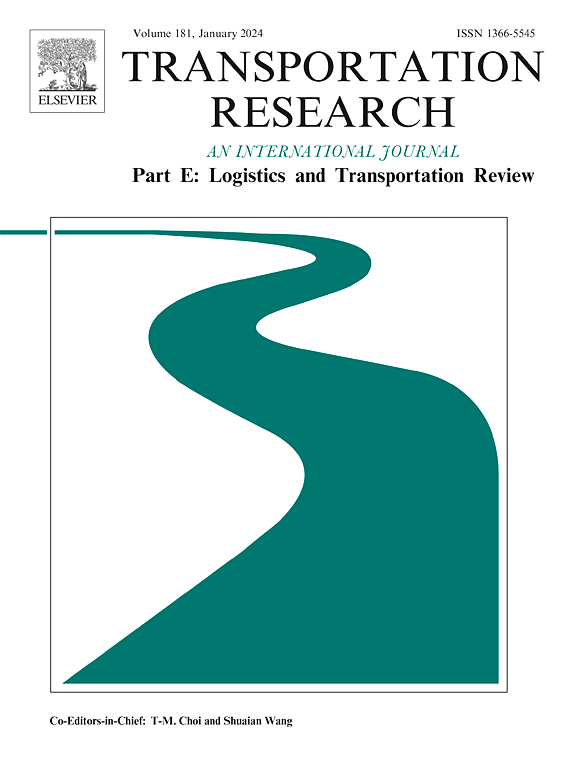Managing shared electric micromobility systems: Allocation planning and battery swapping
IF 8.3
1区 工程技术
Q1 ECONOMICS
Transportation Research Part E-Logistics and Transportation Review
Pub Date : 2025-04-12
DOI:10.1016/j.tre.2025.104108
引用次数: 0
Abstract
Using electric micromobility vehicles, shared electric micromobility systems provide an environmental mode of short-distance travel within a city. Given the inescapable costs of vehicles and batteries, and the necessity for the system operator to manage the state-of-charge of vehicles through battery swapping to effectively meet uncertain demands, it is pivotal to accurately determine the initial allocation of vehicles and batteries, as well as to manage battery swapping during operations under uncertainties. Therefore, we formulate a two-stage stochastic program. In the first stage, the operator decides allocation of vehicles and spare batteries. In the second stage, it determines vehicle operations and battery swapping in various regions over a time horizon. To enhance computational efficiency, we develop alternating direction method of multipliers (ADMM) to decompose the stochastic problem into several deterministic subproblems and iteratively solve them in parallel. We show the obtained solutions converge when iteration step approaches infinity, with their accumulation point satisfying the KKT conditions. Moreover, we show ADMM converges at a rate of (1/). Our numerical results suggest that ADMM outperforms a commercial solver in computational time, reducing it by up to 96.5%. We reveal that raising allocation capacity increases the allocation of vehicles and batteries, but the allocation growth rate diminishes as capacity rises further. The operator prefers to swap batteries once they are depleted rather than preparing full-energy ones in advance. A higher charging speed lowers battery allocation but has a limited impact on vehicle allocation and service level.
求助全文
约1分钟内获得全文
求助全文
来源期刊
CiteScore
16.20
自引率
16.00%
发文量
285
审稿时长
62 days
期刊介绍:
Transportation Research Part E: Logistics and Transportation Review is a reputable journal that publishes high-quality articles covering a wide range of topics in the field of logistics and transportation research. The journal welcomes submissions on various subjects, including transport economics, transport infrastructure and investment appraisal, evaluation of public policies related to transportation, empirical and analytical studies of logistics management practices and performance, logistics and operations models, and logistics and supply chain management.
Part E aims to provide informative and well-researched articles that contribute to the understanding and advancement of the field. The content of the journal is complementary to other prestigious journals in transportation research, such as Transportation Research Part A: Policy and Practice, Part B: Methodological, Part C: Emerging Technologies, Part D: Transport and Environment, and Part F: Traffic Psychology and Behaviour. Together, these journals form a comprehensive and cohesive reference for current research in transportation science.

 求助内容:
求助内容: 应助结果提醒方式:
应助结果提醒方式:


